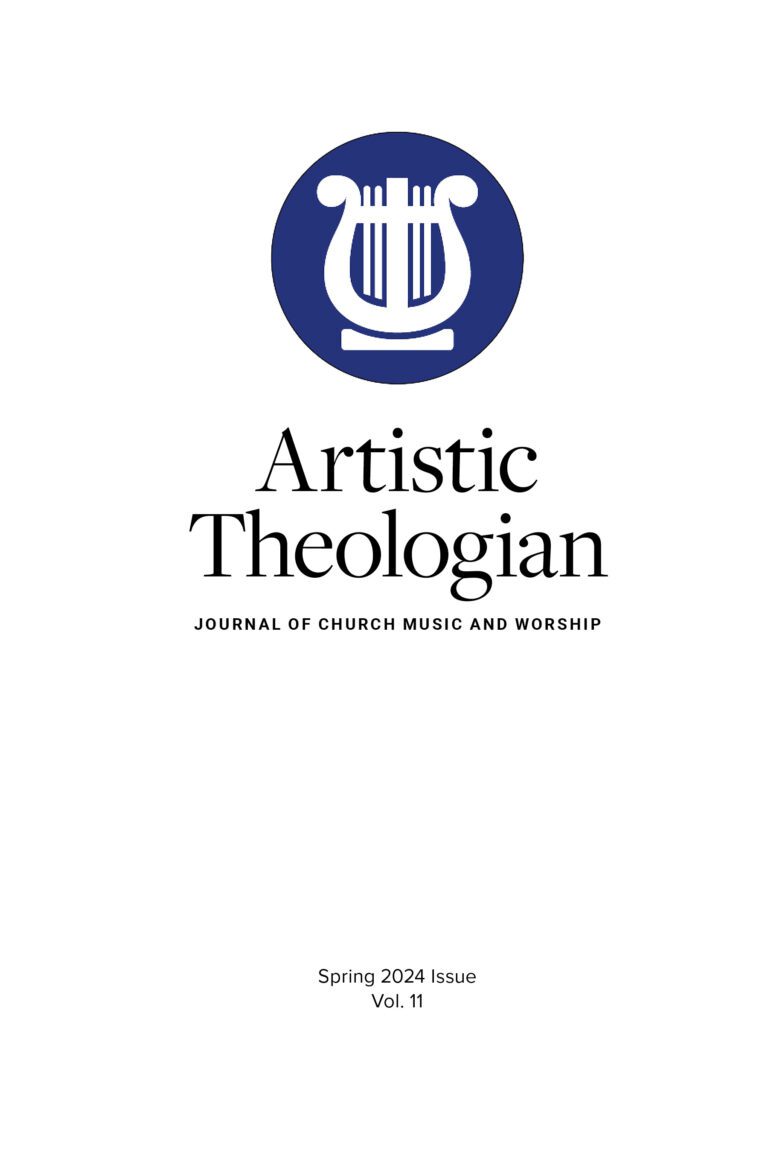
The Relationship of Doxology and Doctrine
Artistic Theologian
Volume 11, Summer 2024
Editor: Joshua A. Waggener
Liturgy And Identity: London Baptists And The Hymn-Singing Controversy. Vol. 21 Of Centre For Baptist Studies In Oxford Publications By Matthew Stanton. Oxford: Regent’s Park College, 2022. 295 Pp. $30.24.
Historian Matthew Stanton completed his doctorate at Queen’s University Belfast in 2020 and serves as a pastor in Ontario, Canada. Stanton displays his skill for reconstructive history in Liturgy and Identity: London Baptists and the Hymn-Singing Controversy. Drawing from original sources (including sermons, periodicals, hymn books, and personal correspondence), Stanton effectively recreates the late seventeenth-century debates surrounding congregational hymn singing. This project involves not only introducing a wide range of historical figures in and around London during that time, but also tracing the way that the beliefs and convictions of these figures changed over the course of the controversy. Stanton successfully advances the argument that “[Benjamin] Keach’s work came to shape and later define the singing practices of Particular Baptists, informing, as a consequence, the practice of the emerging evangelical movement” (1).
A thorough introduction provides biographical information on Benjamin Keach—his baptism as a teenager into the General Baptist church, his marriages, and even his early persecution for his anti-paedobaptist views. Keach’s shift from General Baptist to Particular Baptist in the early 1670s is contextually important for the theological debates that would occur later. Chapter 1 outlines the progression of Baptist liturgical practice from the beginning to the end of the seventeenth century, with special attention paid to the role of congregational singing. Chapters 2 and 3 describe the way that Keach introduced congregational hymn singing to his church at Horselydown, and then offers an analysis of the poetic content and thematic structure of Keach’s hymns. Chapters 4 and 5 detail the printed debates that ensued after Keach’s introduction of hymn singing (there were two waves of such debates in the 1690s) along with the gradual adoption of the practice by Baptists in London. The final chapter assesses the long-term impact of Keach’s innovations on the evangelical movement in the late seventeenth and early eighteenth century.
According to Stanton, there was no fixed Baptist position on congregational singing during the seventeenth century. This is true because (1) Baptist congregations were ecclesiastically independent, and (2) many Baptists (both churches and individuals) shifted theologically over the course of the century. While each church claimed adherence to the regulative principle and continuation of Reformation ideals, in reality there was a wide variety of practice concerning corporate worship in Separatist congregations. This is where Stanton offers the most practical help: his research helps the reader understand the when, where, and why of the major players of Baptist worship history.
To best understand the overarching shift in attitudes toward congregational hymn singing throughout the seventeenth century, Stanton precisely describes five points that were debated in Baptist circles. First, was singing a congregational or a solo practice (46)? For the congregation to participate together, existing forms and content would need to be used. Second, what content was considered “appropriate for public worship” (49)? Third, was congregational hymn singing an ordinance for the church (46)? If singing was indeed an ordinance, then a supply of hymnody was needed. Fourth, Baptist minister Hercules Collins made the argument that any song or hymn was valid for worship “as long as its message could be confirmed by Scripture” (57). The fifth and final step toward a new theology of hymn singing was the belief that singing should be considered an ordinary gift, not an extraordinary one (47). Although these issues sparked vigorous debate throughout the 1690s, Stanton asserts that “by 1712 congregational hymn-singing [had] become an established practice within the cultures of dissent” (244).
Stanton dedicates chapter 3 to an analysis of Keach’s hymns. The placement of this chapter unfortunately breaks the chronological flow of the narrative, but Stanton deftly educates the reader on the merit of Keach’s hymnody through multiple textual examples, including analysis of rhyme schemes, prosody, and subject matter. The poor quality of Keach’s hymnody is well known. Hymnals today rarely include more than one or two Keach poems (if any), and his talent was vastly overshadowed by the genius of Watts and Wesley. Stanton offers an excellent explanation why Keach’s hymnody did not survive for long (poor quality notwithstanding). When John Gill assumed leadership of the Horselydown church after Keach’s death, he stopped the practice of hymn singing (140). When the church began singing hymns again around 1780, the hymns of Watts and Wesley were without parallel and represented the bulk of the popular hymn repertoire. Even in his own church, Keach’s hymns were not sung after his death.
It is a testament to Stanton’s outstanding scholarship that by the end of this volume, the reader feels that they have come to know Keach the man. After the General Assembly of Particular Baptists in London (1692) called for a stop to the vitriolic print debate over hymn singing, Keach largely avoided the controversy moving forward. He simply wrote more hymns, compiled more hymnbooks, and wrote in favor of hymn singing without addressing his detractors.
This book will be most useful to students and researchers, but those interested in Baptist history or the practice of congregational singing will enjoy reading it as well. Stanton’s review of the extant literature is invaluable—he impartially articulates the strengths and weaknesses of various Keach biographies. Only through the detailed exploration of personal connections and writings are we able to trace how beliefs were shared and shaped centuries ago. Stanton deserves commendation for this meticulous re-creation of late seventeenth-century Baptist worship culture focusing on Benjamin Keach.





